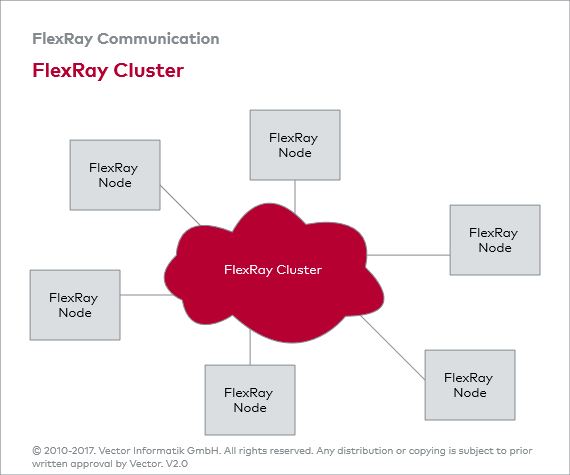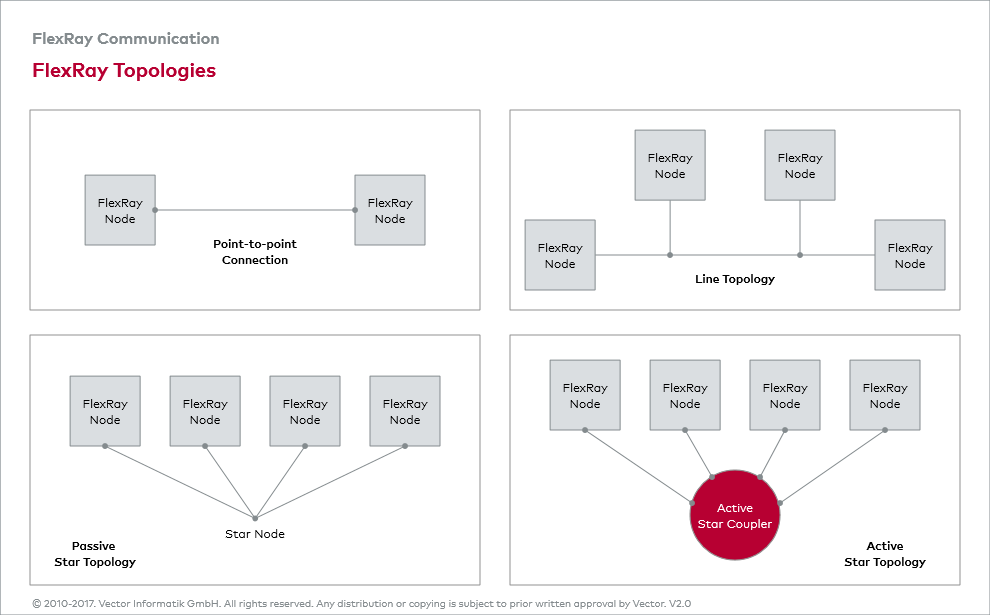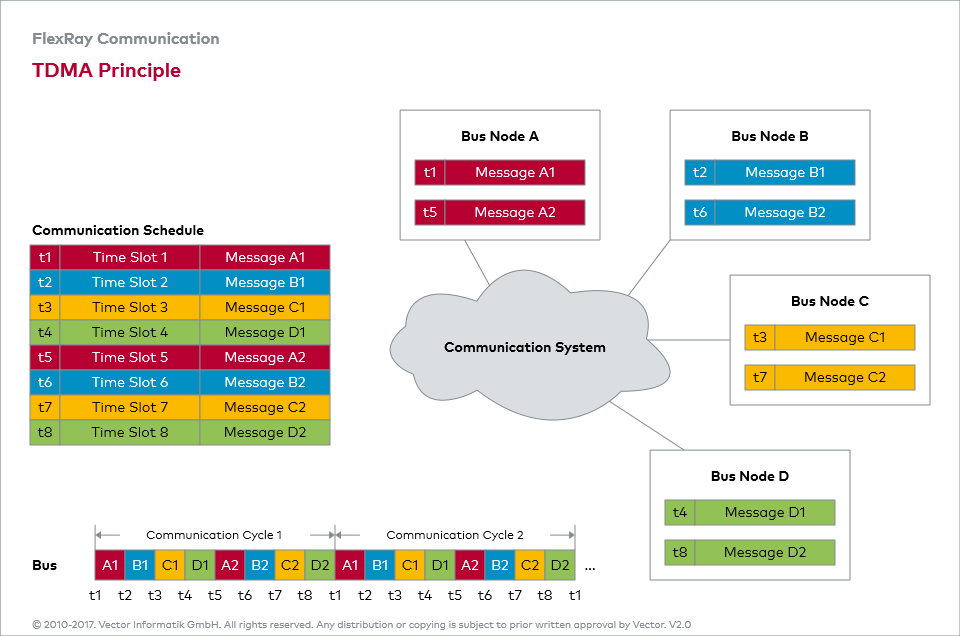Communication Architecture
A FlexRay communication system (FlexRay Cluster) is made up of a number of FlexRay nodes and a physical transmission medium (FlexRay Bus) interconnecting all of the FlexRay nodes. Since FlexRay communication is not restricted to any specific physical topology, a FlexRay cluster may be based on any of a number of different physical topologies. A point-to-point connection is as feasible as a line topology, passive star topology or active star topology.
To minimize the risk of failure, FlexRay provides for redundant layout of the communication channel. Each of the two communication channels may be operated at a data rate of up to 10 Mbit/s. However, as an alternative this redundant channel may be used to increase the data rate to 20 Mbit/s. The choice between fault tolerance and increased transmission rate can be made individually for each FlexRay message.
The FlexRay cluster is based on a time-triggered communication architecture, whose core property is static, time defined triggering of actions in the distributed system. The principle of time control not only enables deterministic data communication, but also simple composability of a communication system and implementation of concepts building upon it, such as fault tolerance that is attained by integrating redundancies and synchronous triggering of actions.
To implement time-triggered control, the TDMA method (Time Division Multiple Access) is used, which means that the FlexRay nodes may not access the bus in an uncontrolled manner in response to application-related events as in CAN. FlexRay nodes must conform to a precisely defined communication schedule, which assigns a specific time slot to each FlexRay message per communication cycle and thereby prescribes the send times of all FlexRay messages.
An illustrative communication schedule and the communicative flow on the communication medium are shown in the figure “TDMA Principle”. The communication schedule is based on a communication system consisting of four bus nodes, where each bus node must transmit two messages at specific times.



